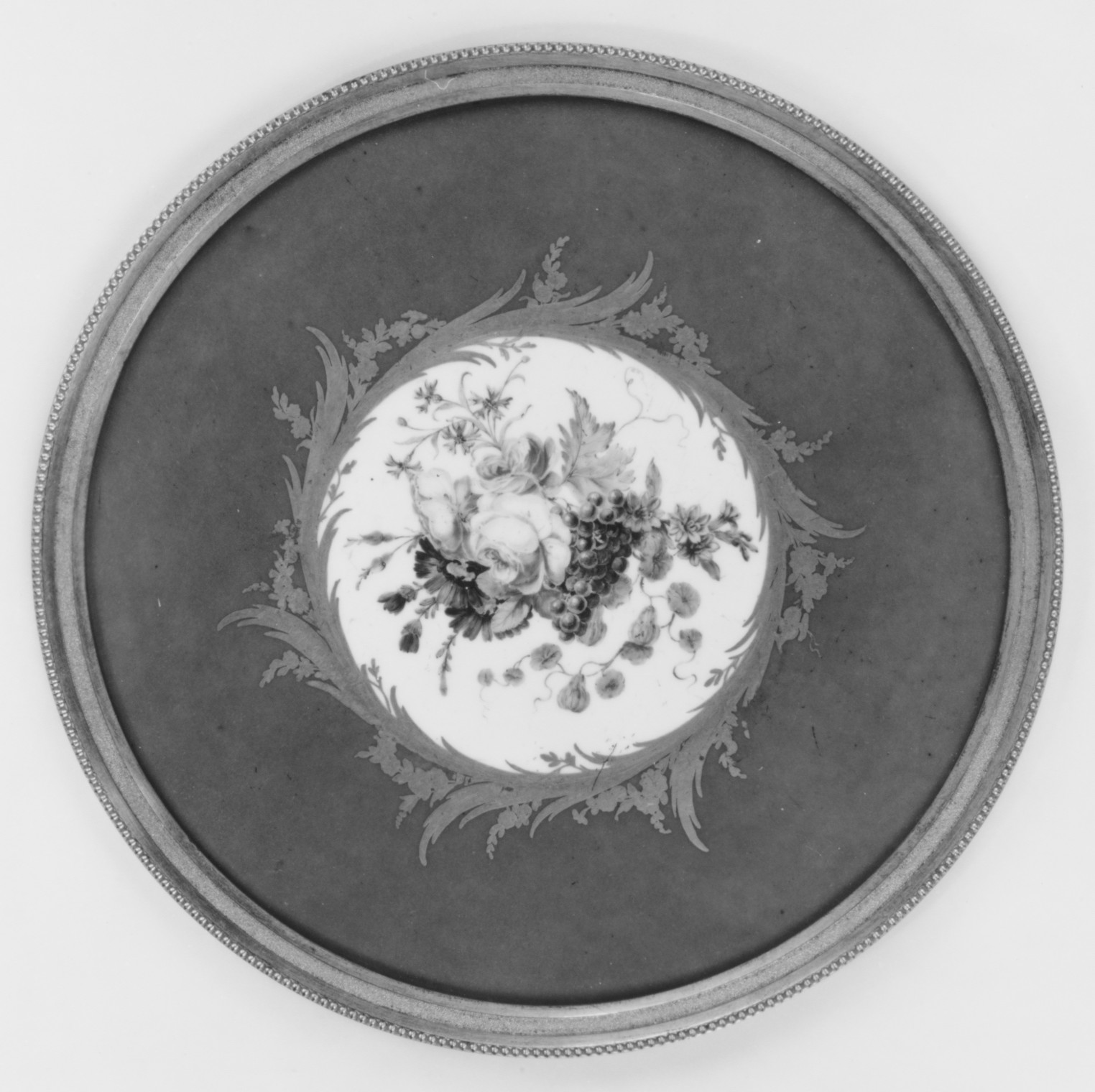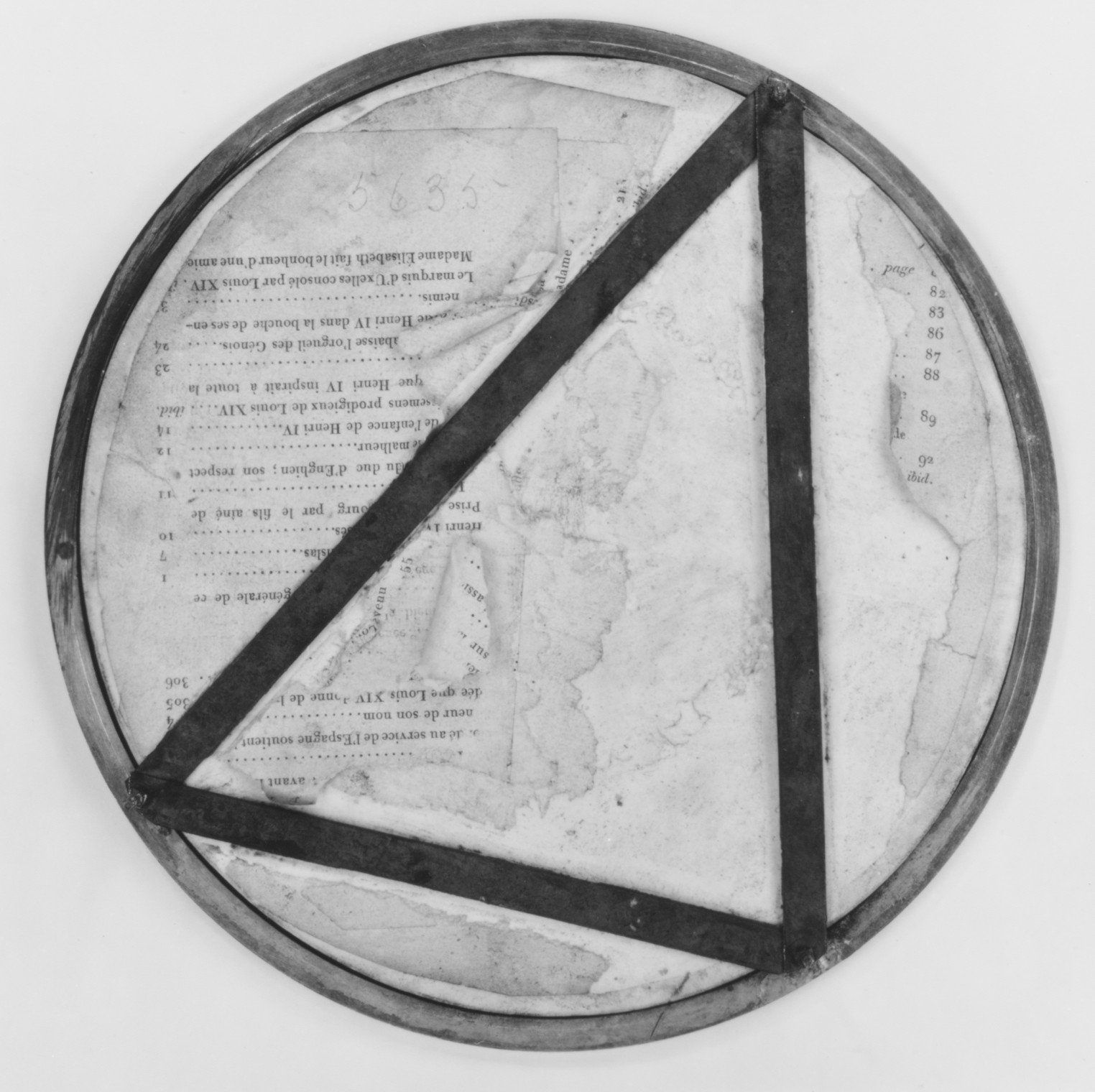Candlestand
Porcelain plaques by Sèvres Manufactory French
This adjustable candlestand was intended to support a freestanding candlestick or candelabrum. The ring on the side of the pillar controls a spring-operated lever, which engages in a steel ratchet and allows the top to be set at any height up to 45-1/4 in. (114.8 cm). Inset in the top is a circular plaque of Sèvres soft-paste porcelain. The plaque is painted with a broad apple-green border around a white reserve, which is framed by a gold band with branches and leaves; a composition of flowers and grapes is painted on the white reserve. The plaque is unmarked but can be dated about 1780 on stylistic grounds. The legs are a distinctive feature of this candlestand: each is a stylized human leg and terminates with a gilt-bronze mount in the form of a shoe tied with a ribbon.
Martin Carlin made a number of candlestands with Sèvres plaques, often with the addition of a second marquetried tray below the top and a pair of gilt-bronze candle arms on a steel shaft above the top (examples are at Waddesdon Manor, in the collection of Mr. and Mrs. Charles Wrightsman, New York, and in the Philadelphia Museum of Art). The refinement of the present candlestand and the high quality of chasing on the mounts recall Carlin’s candlestands, but the legs and details of decoration are not so closely related to his signed work as to allow a strong attribution. Candlestands fitted with a ratchet system were also made by other cabinetmakers of this period, including Pierre Denizot (ca. 1715–1782) and Joseph Gengenbach, called Canabas (maître 1766–97).
[Bill Rieder, 1984]
Due to rights restrictions, this image cannot be enlarged, viewed at full screen, or downloaded.
This artwork is meant to be viewed from right to left. Scroll left to view more.




